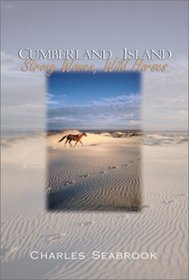Search -
Cumberland Island: Strong Women, Wild Horses
Cumberland Island Strong Women Wild Horses
Author:
In September 1996, Cumberland Island blasted on to the national news scene when it was revealed that John Kennedy, Jr., and Carolyn Bessette were married on the island in the First African Baptist Church--a simple one-room frame structure with eight handmade pews. When the flotilla of writers and photographers arrived on the island a few days la... more »
Author:
In September 1996, Cumberland Island blasted on to the national news scene when it was revealed that John Kennedy, Jr., and Carolyn Bessette were married on the island in the First African Baptist Church--a simple one-room frame structure with eight handmade pews. When the flotilla of writers and photographers arrived on the island a few days la... more »
ISBN-13: 9780895872678
ISBN-10: 0895872676
Publication Date: 8/2002
Pages: 300
Rating: ?
ISBN-10: 0895872676
Publication Date: 8/2002
Pages: 300
Rating: ?
0 stars, based on 0 rating
Publisher: John F. Blair Publisher
Book Type: Hardcover
Other Versions: Paperback
Members Wishing: 0
Reviews: Amazon | Write a Review
Book Type: Hardcover
Other Versions: Paperback
Members Wishing: 0
Reviews: Amazon | Write a Review
Genres:
- History >> Americas >> United States >> General
- Outdoors & Nature >> Environment >> Conservation




